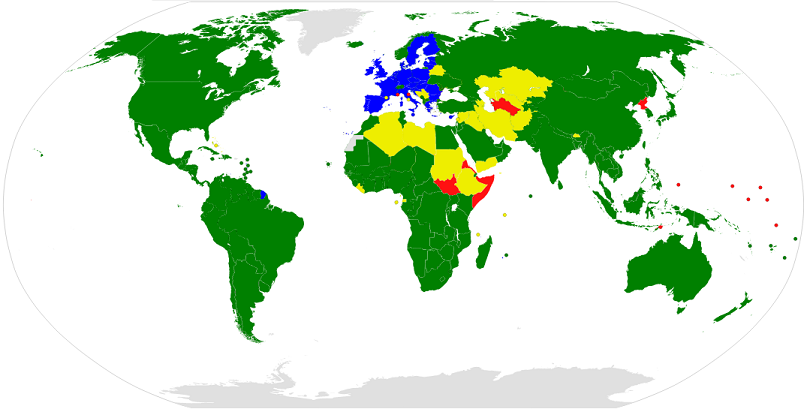The World Trade Organization (WTO) is an international organization that provides the legal and institutional framework for implementing and monitoring free trade agreements around the world - as well as for settling disputes arising from their interpretation and application.1 It also provides an international forum for negotiating free trade agreement - agreements aimed at reducing obstacles to international trade and ensuring a level playing field for all.1
At the end of and after World War II, the United States, United Kingdom and other war-allies proposed an international trading framework that would offer substantial improvements to international trade to help rebuild post-war economies.2 These nations processed by-pass agreements on liberalizing trading that resulted in the GATT, The General Agreement on Tariffs and Trade, signed in 1948.
By 1950, The General Agreement on Tariffs and Trade accounted for approximately one-fifth of World trade. While the GATT had successfully created a resilient multilateral trading system, by the 1980s, rounds of trade negotiations had become far more liberal and radical, and a strategic move was needed to make up for areas of policy missing in the original GATT. World trade had changed significantly since the late 1940s. Plurilateral agreements, especially during the Tokyo Round in the 1970s, presented new problems for the GATT. As a result, it became imperative that a new, stand-alone governing body would be needed to institutionalize the GATT as well as address other GATT issues such as agricultural loopholes (that were being heavily exploited) and the trading of services.3
As a result, the WTO was established from negotiations called the Uruguay Round, which took place in the late 1980s and early 1990s. These seven and a half years of negotiations were the largest trade negotiations ever.4 As a result, the WTO replaced GATT as an international organization, but the General Agreement still exists as the WTO’s umbrella treaty for trade in goods, subject to modifications made in 1994 to the agreement as a result of the Uruguay Round negotiations.
By August 24, 2012, the WTO included 157 membership countries and, in addition, 27 observing countries. The head location in Geneva, Switzerland facilitates a forum where governments negotiate trading agreements.
References:
1. (2012). About the WTO — a statement by the Director-General. The World Trade Organization.
2. (2005). From the GATT to the WTO: History and Basic Information. E.B. Williams Library. Retrieved October 24, 2012
3. The Roots of the WTO. Universidad Nueva Esparta. Retrieved October 24, 2012.
4. WTO Facts. Retrieved from: http://www.wto.org/english/thewto_e/whatis_e/tif_e/fact5_e.htm.


